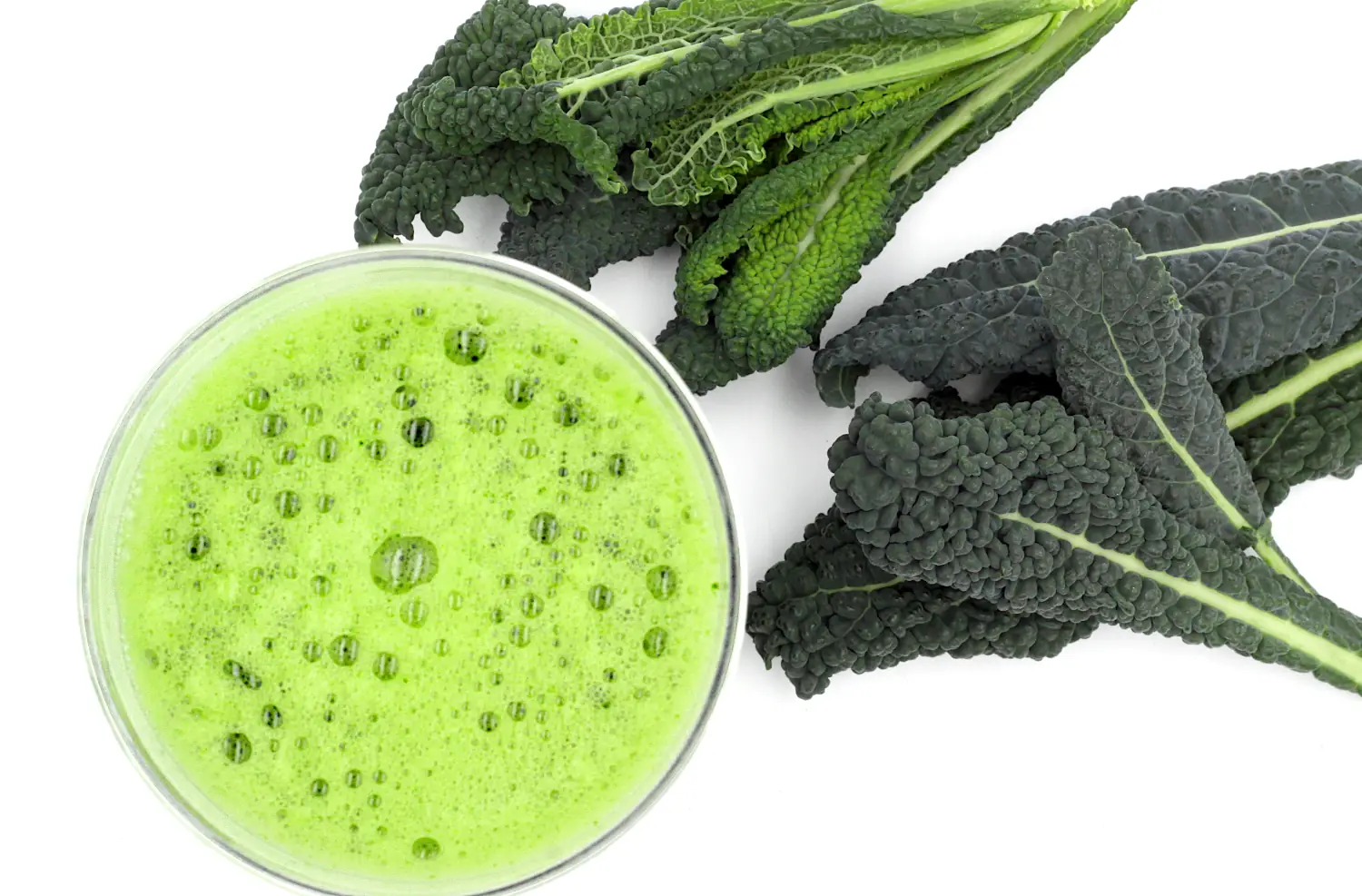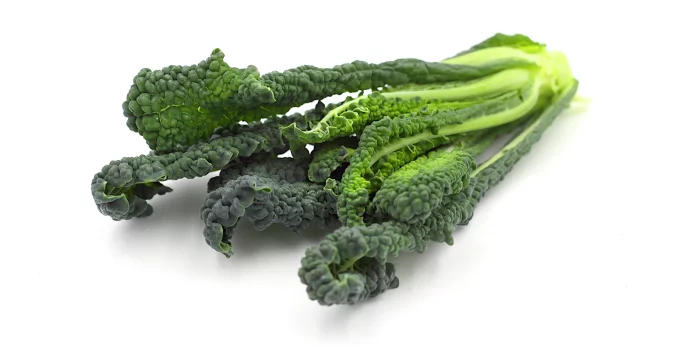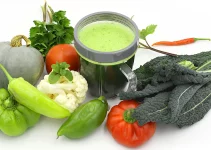I should be honest right from the start: looking for the best juicers for kale or for leafy greens in general is not going to be easy. Things can get a bit complicate. You’ll soon see what I’m talking about.
Frankly, it’s a lot easier to find juicers for ginger or for apples, carrots, mango, citrus fruits and other similar fruits and vegetables than it is to find some capable juicers that can squeeze out the juice from all sorts of leafy greens.
Green juices are amazing for us and I totally get the need to make some a few times a week. However, as far as I can ascertain, juicers manufacturers haven’t been able to come out with the best juicers for kale and leafy greens that totally squeeze the juice out of these delicate, softer ingredients.
Thus, juicers are totally capable of handling hard ingredients.
Most of the time, tiny disappointments start cropping up when it comes to juicing softer ingredients. In that respect, it was another challenge finding the best juicers for berries. Or the best juicers for vegans.
Best Juicers for Kale Reviews

I’ll totally do my best to review some of the best juicers for kale and leafy greens that are available at the moment.
Nevertheless, I also want to reinforce the statement I made in the beginning: there’s no perfect juicer that will handle all leafy greens and softer ingredients perfectly.
Sometimes, the green leaves will not be perfectly juiced.
Juicers are usually better at juicing the stem than the leaves. That’s because the stems have a hard texture so it’s totally logical. Thus, you should be happy if you use kale with thick stems.
My advice is that you should juice the same ingredients two times. This especially applies to centrifugal juicers. If you notice that the pulp is too wet, just juice it a second time.
Also, sometimes, I just blend my leafy greens because my blender will always make the perfect smoothie from, any ingredients I throw in, including frozen fruits and veggies.
Last but not least, make sure to always read a few negative reviews before making a purchase. I’m not saying that you should only pay attention to the negatives but we need to pay attention to them if we want to make an informed decision about the best juicers for kale.
1. Hamilton Beach Juicer Machine: Overall the Best Juicer for Kale
I truly consider that the Hamilton Beach Juicer Machine is one of the best juicers for kale if you want to make a lot of green juices.
However, I am also aware that some people might not consider this one to be the best option for them. I can totally get that but I wanted to start off my reviews with this model from Hamilton Beach for a few very important reasons.
While this is a centrifugal juicer, my opinion is that it’s a lot better at juicing leafy greens than a lot of other more expensive masticating juicers.
Some people will not want to buy a centrifugal model under any circumstances and I can understand that point of view. However, if you have no problems with buying a centrifugal model, then you should consider reading about the Hamilton Beach Juicer Machine.
Another aspect that I really like is that this model is one of the most affordable juicers at the moment.
I love that it can be one of the best juicers for kale for people who have a budget under $100. It addresses the needs of those on a budget and I always appreciate affordable appliances that keep in mind that they should offer quality for the money.
Those are my main reasons for considering this one of my favorites. Let’s see what else it offers.
Features
This juicer promises to help us make healthy, homemade juice in seconds. We can juice a variety of fruits and veggies.
Frankly, even some more expensive models are not as versatile as this cheap Hamilton Beach. That’s what I really like about it.
It’s a powerful centrifugal juicer with a powerful 800 watts motor.
Does all that power and thousands of rotations per minute make it noisy?
They do indeed. It’s a noisy appliance. If you care about this aspect a great deal, you should totally eliminate this model from your list.
On the other hand, if your priority is getting a juicer that squeezes out juice incredibly quickly, then you’re going to really like the Hamilton Beach Juicer Machine.
It has a 3-inch Big Mouth chute. It’s a pretty common feature among centrifugal juicers. We don’t have to do a lot of prep to get our fruits and veggies to fit the chute. We can throw a lot of them down the chute whole. No need for cutting in chucks for most ingredients.
We get a container for the pulp but we don’t get a juice jug. You’ll have to use your own containers or glasses. It’s not a very big deal and I don’t consider it a con when this appliance is so cheap.
Juice the pulp again if you feel that it’s too wet.
Is it easy to clean?
I would say that even beginners will be able to figure out cleaning all the components and putting them back together pretty quickly. I’m satisfied in this area.
The removable parts are dishwasher safe and BPA free.
How good is it for kale and leafy greens?
One buyer who uses the Hamilton Beach Juicer Machine to make a juice with kale has even posted their recipe: 1 cucumber, 4 stalks celery, 3+ handfuls of spinach or kale, 2 apples, and ½ lime or lemon.
Apparently, this recipe makes 32 oz of juice. The person mentions that this model is a great juicer for a beginner.
Thus, if you’re not sure that you’re going to stick to juicing regularly, buying a cheaper appliance is a much better idea than spending hundreds of dollars on one and not using it often.
Another buyer mentions that they have tried kale and spinach and that they have not juiced well. People definitely have different experiences sometimes.
Overall, I was truly glad to see that there are plenty of buyers who make juices with kale and other leafy greens with the Hamilton Beach Juicer Machine and they’re totally satisfied with their experience.
Lastly, I should mention that parsley and spinach are ingredients included in the few recipes included in the user manual so it can handle a variety of leafy greens and herbs.
2. Omega Juicer NC900HDC: Amazing Juicer for Kale
I could have totally started off my reviews for the best juicers for kale with the Omega Juicer NC900HDC because this is quite an impressive appliance.
It is also a second favorite of mine when it comes to recommending the best juicers for kale and leafy greens. And for many other types of juices.
Expensive juicer
But why didn’t I if this Omega is so impressive?
The reason is simple: I believe that the Omega Juicer NC900HDC addresses a narrower audience because it’s quite an expensive appliance to make healthy, delicious drinks.
With a price around $350-$450, depending on whether you can find it on sale or not, this is one of the most expensive juicers we could buy.
We could buy maybe 5-6-7 Hamilton Beach Juicer Machine for the price of one Omega Juicer NC900HDC. That’s a stark price difference.
And that’s the only reason why this Omega features as my second review and the Hamilton Beach occupies first place.
They’re also two fundamentally different types of juicers. They have absolutely nothing in common starting from design all the way down to their juicing mechanism.
The Hamilton Beach Juicer Machine looks like a classic juicer, while the Omega Juicer NC900HDC might remind people who are new to juicing of a meat grinder or something because it’s a horizontal model.
Thus, this Omega is not a small appliance, you must have a pretty spacious kitchen for it to fit on the countertop.
The Omega Juicer NC900HDC measures 15.5 H x 14.5 D x 6.5 W.
On the other hand, the Hamilton Beach Juicer Machine measures 14.4 H x 7.8 W x 11.5 D.
Neither is exactly small, but one is certainly a bit smaller than the other.
Masticating juicer
Since I reviewed a centrifugal juicer, it is only natural that the second recommendation for the best juicer for kale is a masticating juicer. We have to compare and contrast.
Thus, the Omega Juicer NC900HDC is perfect for those who don’t want a centrifugal juicer under any circumstances.
It’s a slow juicer but that can also ensure that it squeezes out the juice from ingredients quite thoroughly and efficiently. You can expect a pretty dry pulp at the end of the process.
Being a masticating model, we could also assume that we get to make nutrient-dense drinks.
The low speed minimizes heat build-up and oxidation.
And the low speed also makes it a lot less noisy than centrifugal models. It’s a good option for those who are looking for a quiet appliance.
It takes a bit more until the juice is done but it won’t be a problem if you don’t expect a juice in a minute.
Even if it’s a slow squeezing juicer, we still get a powerful 2HP motor that generates more torque to process tough ingredients.
There are also 5 adjustable pressure settings.
We could also say that this Omega is the flagship of the horizontal single augers with 80 RPM.
The manufacturer also mentions that it’s easy to clean with automatic pulp ejection.
More than a juicer
The Omega Juicer NC900HDC is advertised as being capable of making a wide array of things: baby food, celery juice, citrus juice, fruit juice, leafy greens juice, nut butters, nut milks, pasta, sorbet, vegetable juice, and wheatgrass juice.
It includes a bunch of components in order to do all that:
- juice cone
- 4 nozzles (3 pasta & 1 breadstick)
- pulp bowl
- homogenizing cone
- juice bowl
It includes a 15-year warranty.
3. The Original Healthy Juicer
This is a manual juicer for wheatgrass and leafy greens (kale, spinach, parsley, and more).
The question we must now answer is: is a manual juicer for leafy greens and wheatgrass better than a centrifugal or masticating juicer like the two I recommended above as two of the best juicers for kale?
I would like to say that it’s a better choice than the electrical appliances we have at our disposal but, unfortunately, that’s not the case.
The truth of the matter is that The Original Healthy Juicer has a large amount of negative reviews. We simply cannot ignore all of them.
In the vein of impartiality, I will mention that there are plenty of buyers who are impressed with the performance of this manual juicer for kale and wheatgrass. But I want to present the whole picture.
Fortunately, when I reviewed some of the best juicers for pomegranate, I found an amazing manual juicer. Sometimes, manual juicers truly are some of the best choices for some fruits.
Features
It is designed as a horizontal masticating juicer, with the major difference that in order for it to squeeze juice out we need to turn the hand crank until we’re done.
There are tomato juicers that are manual and use the same hand crank mechanism. And there are also manual grain mills for making flour that work based on a hand crank design.
Thus, the principal for this manual juicer for leafy greens and wheatgrass is totally fine.
In order to make the juice we need to:
- prep the greens
- place the juice cup under the spout by the handle
- use the hand crank to squeeze out the juice
- disassemble the juicer
- rinse all parts
It’s very easy to clean and pretty straightforward to use.
Can we juice only leafy greens and wheatgrass?
The manufacturer mentions a recipe for a juice made with: spinach, kale/wheatgrass, stalks of celery, cucumber, lemon, apples.
Based on this recipe, the conclusion we can draw is that it should work for hard ingredients like apples, too.
However, there are buyers that have mentioned that it didn’t juice any fruits or veggies from a wide variety of ingredients.
Many people mention that this product is terribly designed. It seems that a lot of its components don’t work as they should.
If you decide that a manual juicer could be the best juicer for kale for your kitchen, please read both some positive and some negative reviews before deciding if you’re willing to take a chance on it or not.
The very good point about The Original Healthy Juicer is the fact that it’s quite cheap, it has a similar price to the Hamilton Beach Juicer Machine.
4. Tribest Greenstar Elite GSE-5050: Expensive Juicer for Kale & Leafy Greens
It seems that my reviews for the best juicers for kale continue following an interesting pattern: immediately after reviewing a cheap model I end up reviewing a very expensive option next.
The Tribest Greenstar Elite GSE-5050 is going to end up being the most expensive recommendation in this article.
The price is around $600-$650 but maybe you can get it a bit cheaper if it’s on sale. Still, even on sale, I don’t imagine that it could cost less than $500. That’s a hefty amount to spend on a juicer. It’s going to be interesting to see what it can do.
Features
It’s another masticating horizontal juicer, just like the Omega from above. Although, the design for this Tribest Greenstar Elite is quite prettier, at least in my opinion.
It’s quite technologically impressive, too.
The Greenstar Juicers use bioceramic and magnetic technology found in its jumbo twin gears. The twin gears exercise a mastication that imitates the human teeth.
Thus, the entire process cuts stringy vegetables down and prevents them from tangling and causing jams.
According to the manufacturer, it offers not only the freshest tasting juice but also maximum juicer yields from various fruits and vegetables.
The juice can be kept in the fridge for up to 72 hours. Juices extracted with centrifugal juicers are best consumed on the spot.
Just as the above Omega, the Tribest Greenstar Elite GSE-5050 can also make nut butters, sorbets, sauces, and pates with its homogenizing accessories.
Is it good for juicing kale and leafy greens?
It might be one of the best but I still couldn’t pick it as my top recommendation because that expensive price doesn’t make it all that accessible to a lot of people.
It also has a few negative reviews. They’re not that many but they’re important.
One of those negative reviews actually mentions that it doesn’t juice kale or carrots or parsley.
On the other hand, there are a lot of positive reviews that mention that it’s a terrific juicer, we get super dry pulp but it requires time investment to clean it thoroughly after each use.
Someone mentions that cleaning the unit is simple and takes about 12 minutes from start to finish, including drying.
One person who used it to juice a wide variety of ingredients describes kale juice as being dark green, intense, leafy/grassy, and some bitterness. That’s pretty accurate.
Overall, I think it’s great for kale and leafy greens and any other ingredients that we want to juice but it’s just too expensive for many people.
5. Jocuu Slow Masticating Juicer
I continue my pattern of cheap juicer review followed by an expensive model then followed by another cheap option. Since the above Tribest Greenstar Elite was very expensive, it’s time for another cheaper alternative.
Considering that this Jocuu is about 4 times cheaper than our above Tribest, I would say that the price difference between them is quite considerable.
Another point I want to make is that Joccu manages to demonstrate one thing: manufacturers can make decently priced masticating juicers while still maintaining a good quality standard.
Obviously, there are plenty of negative reviews to check out and balance out with the good. But that’s what we have to make no matter what we’re buying.
Features
We get a 150 watts motor, which might seem very weak, but you should know that it’s capable of juicing ginger and other hard ingredients without impediments.
It has 2 speeds and it operates at 60 decibels, which is the level for normal conversation.
Thus, it’s pretty quiet.
It’s also fairly easy to clean and its components are dishwasher safe.
It also has a reverse function that prevents clogging.
How does it work for kale and leafy greens juices?
It’s very decent even for these trickier-to-juice ingredients. Someone mentioned that leafy hard veggies like kale, collard greens, Swiss chard work better than spinach or Romaine.
Because of the stems, it’s easier to juice kale than it is to juice spinach.
On the other hand, there are also buyers who mention that, when putting kale through the machine, they got more froth than juice.
Overall, it’s not among my favorites but it’s a model that has some very good points about it.
Best Juicers for Kale Buying Guide
I gave you my recommendations for the best juicers for kale but maybe you don’t like any of my preferences. In that case, let’s see what you need to know about juicers.
Type of juicer for kale
There are two main types of juicers we can choose from: centrifugal juicers and masticating juicers.
Centrifugal juicers
Centrifugal juicers shred fruits and vegetables with a high-speed spinning blade. There’s also a basket with fine holes in it. The juice is sieved through these fine holes as it’s forced through and out of the spout.
Then, the pulp is sent to a container. One again, I recommend juicing this gathered pulp a second time because centrifugal juicers can leave quite a wet pulp sometimes.
When we’re juicing leafy greens and softer ingredients, the possibility of getting a wet pulp increases. Just juice it a second time to minimize waste.
This type is also the fastest because the motors are incredibly powerful. The speed they can reach can be between 6,000 and 14,000 RPM.
They’re amazingly fast and sometimes they can get a bit too noisy. At least the noise doesn’t last for long. You can throw down handfuls of leafy greens and be done in no time.
Another important thing we must know about the centrifugal type is that their fast speeds incorporate more oxygen into the juice. That can reduce the shelf life of the juice so I recommend drinking it fresh, right out of the juicer. Add a few ice cubes if you enjoy it cold.
Some juices can also appear frothy. Personally, I don’t have any problem if that happens.
Last but not least, some people might mention that centrifugal juicers are not the best at juicing leafy greens, wheatgrass, etc. I would counteract this point of view and say that there are definitely masticating juicers that are terrible at juicing greens. It really all depends on how good some models are.
Don’t dismiss centrifugal juicers, especially if you’re on a budget. These are still some of the most affordable models on the market, especially if your budget is strongly under $100.
Masticating juicers
Some will also call masticating juicers cold press juicers. I don’t think that they’re exactly the same but those are technical details that don’t influence our shopping so I won’t go into that discussion.
Just like their name so clearly suggests, masticating models crush or masticate the ingredients with a slow turning screw or auger.
They’re not as fast as centrifugal models. They can be a lot less noisy and their RPM is usually below 100 RPM.
It is assumed that the slow speed results in minimum oxidation, which increases the shelf life of the juice.
It’s also considered that masticating juicers can extract more juice. However, I recommend juicing the pulp a second time if you feel that it’s too wet.
Masticating juicers are in most cases a lot more expensive than centrifugal models. It’s not unusual to come across this type at prices of $300-$500 or even more.
Thus, I would say that masticating models are a better option for people who absolutely know that they’re going to use their juicer almost daily to get out the most of their purchase.
However, if you just want to make a juice in a few minutes in the morning, then I recommend centrifugal models because they’re the fastest.
Budget
Sometimes, having a clear budget in mind can make things a bit easier. At least you know that there’s no point in checking out very expensive models if your budget is under $100.
I tried to cover a wide range of prices when reviewing the best juicers for kale.
As the most affordable option, I recommend the Hamilton Beach Juicer Machine. It truly is the best option for people on a budget.
If masticating juicers are your thing, the cheapest one is the Jocuu Slow Masticating Juicer.
However, the famous ones are the models from Omega or Tribest. These will require a budget in the area of $400-$600.
I was not impressed with The Original Healthy Juicer. Even though it’s a manual juicer for wheatgrass and leafy greens, I was disappointed with it when I read some of the negative reviews written by buyers. I think it’s a good option if you like taking risks and if you don’t mind returning products.
Ease of cleaning
Some models will definitely be a lot easier to clean than others. Nowadays, there are many juicers that have a few parts dishwasher safe.
Overall, I feel that quite a few of them are pretty easy to clean, even for beginners.
If you have to clean your juicer by hand, I recommend letting the harder to handle components soak into a bowl filled with soapy water. Don’t let them soak for more than a few minutes. Soaking will soften the fibers and you can brush them off more easily.
How to juice kale
Kale is a member of the cruciferous or cabbage family so if you’re juicing kale, you shouldn’t also add broccoli, cauliflower, Brussel sprouts, cabbage or bok choy. But you can replace kale in a recipe with spring greens or cabbage (Chinese, Savoy).
In order to ensure maximum yield for kale leaves, I recommend rolling the leaves into a tight ball.
Beginners should know that kale can have quite a strong flavor, some will say that it’s also slightly bitter.
You always need to balance it out with sweeter or citrusy or slightly spicy ingredients. It depends on your tastes.
A good combination for kale juice has ingredients like: 2 handfuls of kale, half a cucumber, a couple celery stalks, 3 apples, and an inch of ginger.
Another combination is a juice made from 1 bunch kale, lemon, cucumber, green apple, and 1 inch of ginger. You can check out the full recipe here.
The writer for the recipe also recommends washing and patting dry the kale leaves.
Also, alternate hard and soft ingredients to help the juicer run better and squeeze out maximum juice.
The simplest kale juice recipe is made from 2 apples and a handful of kale leaves. If you’re using very big leaves, then one or two kale leaves can be more than enough.
A much greener juice can be made with kale, celery stalk, wheatgrass, spinach, and lemon.
All in all, once you choose the perfect model for you out of the best juicers for kale, you can experiment with different ingredient combinations for the most amazing juices.




